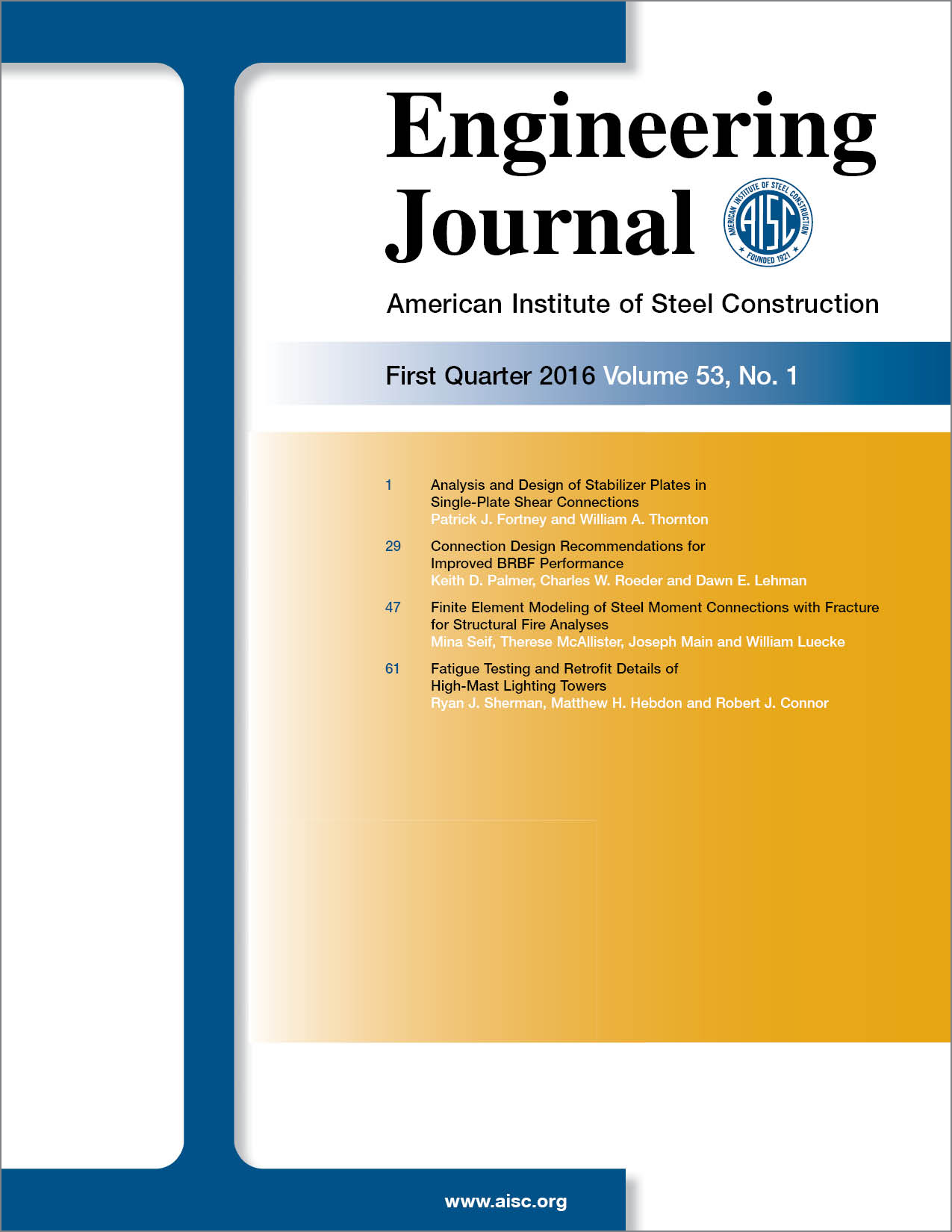Connection Design Recommendations for Improved BRBF Performance
DOI:
https://doi.org/10.62913/engj.v53i1.1094Keywords:
buckling-restrained braced frames, ductile fuse, gusset-plate connection, core fractureAbstract
Numerous component tests on buckling-restrained braces (BRBs) have demonstrated their approximately symmetric tension and compressive capacities, stable cyclic behavior and large (component) ductility prior to core fracture. These properties make them suitable ductile fuses for seismic design. Experiments on buckling-restrained braced frame (BRBF) systems show that the inelastic axial deformation capacity of BRBs may be compromised by system performance demands. Damage including significant yielding, local buckling, twisting and fracture of the beams and columns, tearing of the gusset plate welds to framing members, and out-of-plane movement of the BRB have been observed in BRBF tests. Prior test results are reviewed, and an analytical study using high-resolution models, which were validated with prior test results, is used to develop mitigation strategies for the damage. Design recommendations to mitigate damage and improve system performance are developed. The study reveals that damage to the beams and columns at a corner gusset-plate connection is related to the ratio of the component web thickness to the gusset plate thickness, suggesting a modest design change that will significantly improve BRBF performance.

